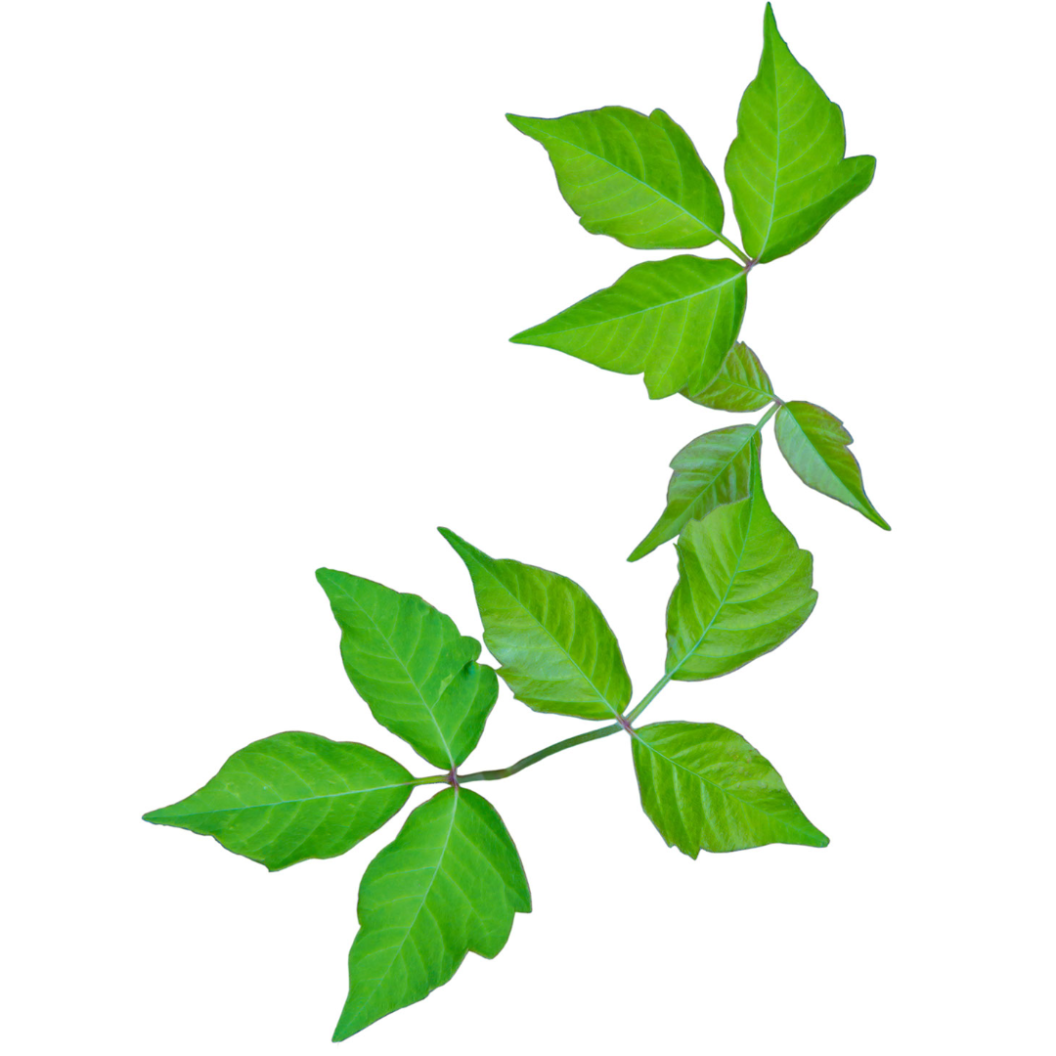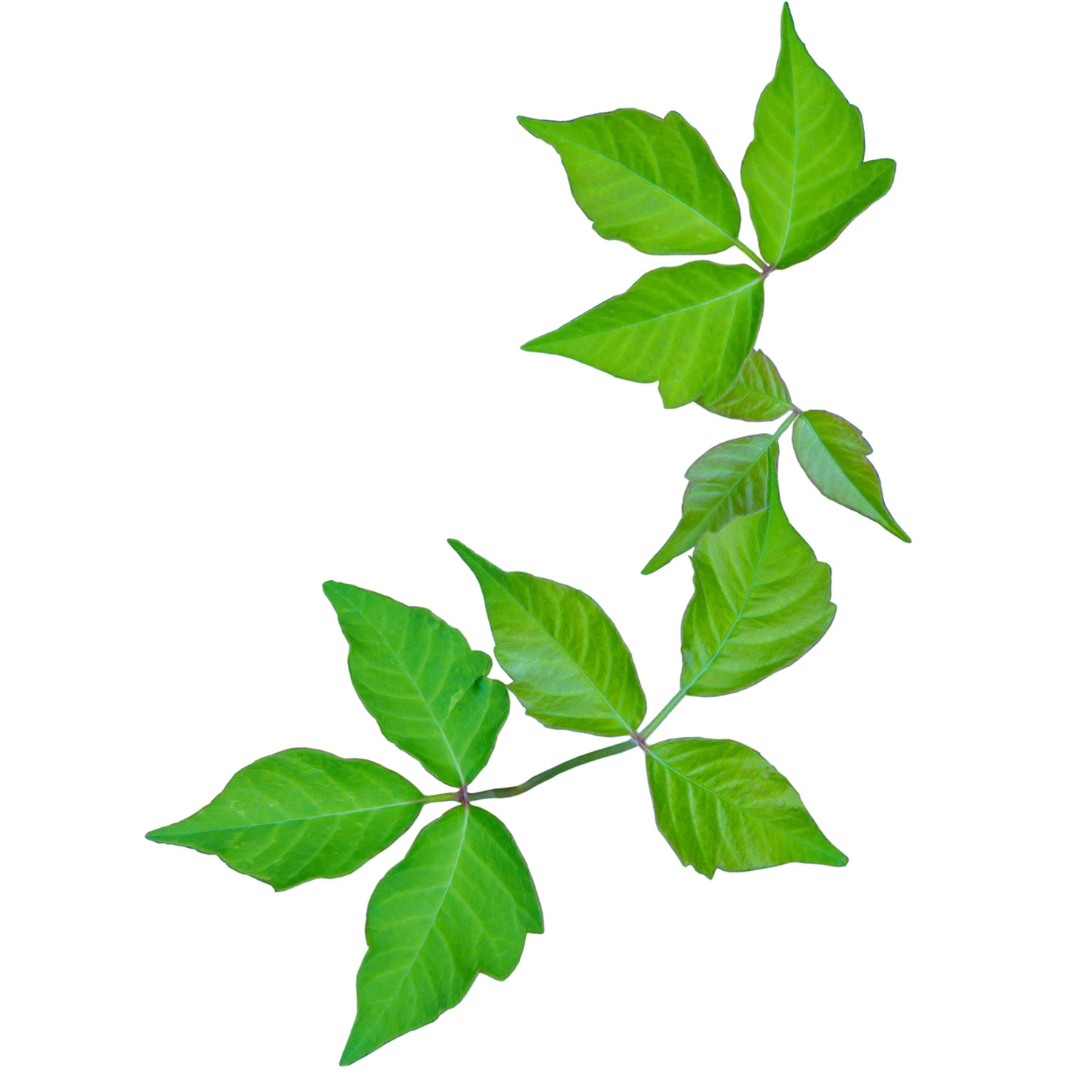
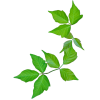

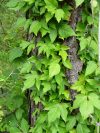
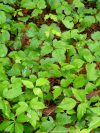
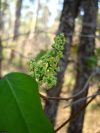

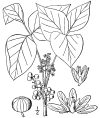
Poison Ivy
DESCRIPTION: Poison ivy is one of the most recognizable names of any weed or undesirable plant due to the notorious rash one might get from coming in contact with it. It's found in many parts of North America and is often recognized by its three leaflets, which can have a shiny surface and jagged or smooth edges. Poison ivy can be found growing as a vine, shrub, or ground cover, and is often found in wooded areas, fields, and along roadsides. It is important to be careful around poison ivy, as even a small amount of contact with the plant can cause a rash that can last for several weeks.
SCIENTIFIC NAME: Toxicodendron radicans
OTHER NAMES: Three Leaved Ivy
LEAF TYPE: broadleaf
FLOWERS: Poison ivy plants produce small, greenish-white flowers that grow in clusters or spikes at the tips of the branches. The flowers themselves are not very showy or noticeable, as they are quite small and often blend in with surrounding leaves. They don't attract bees or other pollinators. Instead, poison ivy flowers are mainly a sign that the plant is in bloom and producing seeds, which are contained in small, berry-like fruits that are green at first and then turn whitish-grey as they mature.
LEAVES: The leaves of the poison ivy plant are made up of three leaflets, which are attached to a central stem or vine. The leaflets are often shiny and can have smooth or jagged edges. They can be various shades of green, and in the fall, they may turn red or yellow before falling off. The leaves are typically about the size of an adult's palm, but they can be larger or smaller depending on the age and growing conditions of the plant.
LIFE CYCLE: Perennial
HOW TO IDENTIFY: The most efficient way to identify poison ivy is to look for the plant's three-leaf patern. Each leaf on a poison ivy is made up of three leaflets that are attached to a central stem or vine. The leaflets are usually shiny and can have smooth or jagged edges. However, it's important to note that not all plants with three leavees are poison ivy, so it's also helpful to look for other identifying features. When in doubt, it is best to avoid touching or handling any plant that you suspect may be poison ivy. If you do come in contact with the plant, wash you skin and clothing with soap and water as soon as possible to help remove the toxic sap that can cause an itchy rash.
MECHANICAL CONTROL RECOMMENDATIONS:
1. Hand pulling - More Info
2. Cutting and Digging - More Info
3. Smothering - More Info
4. Mowing - More Info
5. Using Vinegar - More Info
6. Boiling Water - More Info
7. Hiring Professionals - More Info
CHEMISTRY RECOMMENDATIONS:
"Pre-emergent herbicides:
Glyphosate-based Herbicides: While glyphosate is not typically considered a pre-emergent herbicide, it is a widely used systemic herbicide that can effectively kill poison ivy. It's important to apply glyphosate carefully, as it can also harm desirable plants.
Glyphosate-based products include Roundup and other similar brands.
Triclopyr-based Herbicides: Triclopyr is a herbicide known for its effectiveness against woody plants, including poison ivy. It can be found in various commercial products formulated specifically for brush and woody plant control. Examples include Ortho Max Poison Ivy and Tough Brush Killer and Brush-B-Gon Poison Ivy, Oak & Brush Killer.
Prodiamine: Prodiamine is a pre-emergent herbicide often used for preventing broadleaf and grassy weeds. It can provide some control over poison ivy by preventing its germination. Products containing prodiamine include Barricade and other similar brands.
Isoxaben: Isoxaben is another pre-emergent herbicide that can be effective against certain broadleaf weeds, including poison ivy. It's often used in products designed for controlling broadleaf weeds in lawns and landscapes.
Oryzalin: Oryzalin is a pre-emergent herbicide used for preventing the growth of annual grasses and certain broadleaf weeds. It can offer some control over poison ivy by inhibiting its germination.
Post-emergent herbicides:
Glyphosate-based Herbicides: Glyphosate is a systemic herbicide that is effective against a wide range of weeds, including poison ivy. It works by being absorbed through the leaves and transported throughout the plant, eventually killing it. Products like Roundup Poison Ivy Plus Tough Brush Killer and other glyphosate formulations can be used.
Triclopyr-based Herbicides: Triclopyr is particularly effective against woody plants like poison ivy. It is available in various formulations, including liquids and concentrates. Examples include Ortho Max Poison Ivy and Tough Brush Killer and Brush-B-Gon Poison Ivy, Oak & Brush Killer.
2,4-D and Dicamba Combinations: Some herbicides combine 2,4-D and dicamba to provide broad-spectrum control of both broadleaf and woody plants, including poison ivy. These products can be effective when applied to actively growing poison ivy.
Examples include Ortho Weed B Gon Weed Killer for Lawns and Spectracide Weed Stop For Lawns + Crabgrass Preventer.
Imazapyr: Imazapyr is a herbicide that provides residual control and is effective on a wide range of woody plants, including poison ivy. It can be found in products like Bayer Advanced Brush Killer Plus Concentrate.
Sulfentrazone: Sulfentrazone is another post-emergent herbicide that can control broadleaf weeds and some woody plants. It is often found in products formulated for broadleaf weed control in lawns.
Clopyralid: Clopyralid is a herbicide used for controlling broadleaf weeds, and it can have some effectiveness against poison ivy. It is often found in products designed for broadleaf weed control in lawns.
Selective herbicides:
Triclopyr-based Herbicides: Triclopyr is known for its effectiveness against woody plants and broadleaf weeds. While it may not be completely selective for poison ivy, it can have a greater impact on it compared to some other plants. Products like Ortho Max Poison Ivy and Tough Brush Killer and Brush-B-Gon Poison Ivy, Oak & Brush Killer contain triclopyr.
2,4-D and Dicamba Combinations: Herbicides that combine 2,4-D and dicamba are often used for broadleaf weed control in lawns. While they may not be designed specifically for poison ivy, they can have some impact on it when applied to actively growing plants. Examples include Ortho Weed B Gon Weed Killer for Lawns and Spectracide Weed Stop For Lawns + Crabgrass Preventer.
Clopyralid: Clopyralid is used for controlling certain broadleaf weeds and can affect some woody plants. It may offer some control over poison ivy as well, although its selectivity can vary. It is often found in products designed for broadleaf weed control in lawns.
Metsulfuron-methyl: This herbicide is used for controlling various broadleaf weeds in lawns and turf. While not specifically designed for poison ivy, it may have some effectiveness against it.
Glyphosate with Careful Application: While glyphosate is not typically considered a selective herbicide, it can be applied carefully to minimize its impact on non-target plants. Using a shield or targeted application can help prevent glyphosate from contacting desirable vegetation while treating poison ivy.
Non-Selective herbicides:
Glyphosate-based Herbicides: Glyphosate is one of the most widely used non-selective herbicides. It's a systemic herbicide that works by being absorbed through the leaves and transported throughout the plant, eventually killing it. Products like Roundup and other glyphosate formulations are commonly used for this purpose.
Glufosinate-based Herbicides: Glufosinate is another non-selective herbicide that can be effective against a range of weeds, including poison ivy. It works by inhibiting the plant's ability to produce certain essential proteins.
Pelargonic Acid (Nonanoic Acid): This is a naturally occurring fatty acid that is used as a non-selective herbicide. It works by damaging the plant's cell membranes. Products containing pelargonic acid are often labeled as ""natural"" or ""organic"" herbicides.
Diquat: Diquat is a non-selective herbicide that acts quickly to desiccate and kill plants. It's often used as a contact herbicide and can be effective against poison ivy.
Acetic Acid (Vinegar): Household vinegar with high acetic acid concentration can be used as a non-selective herbicide. It's most effective on young, actively growing plants and might require multiple applications for full control.
Sodium Chlorate: While sodium chlorate is a potent non-selective herbicide, it's less commonly used due to its potential impact on soil health and the environment. Its use may be regulated in some areas.
Recommended Prevention
Recommended Control

